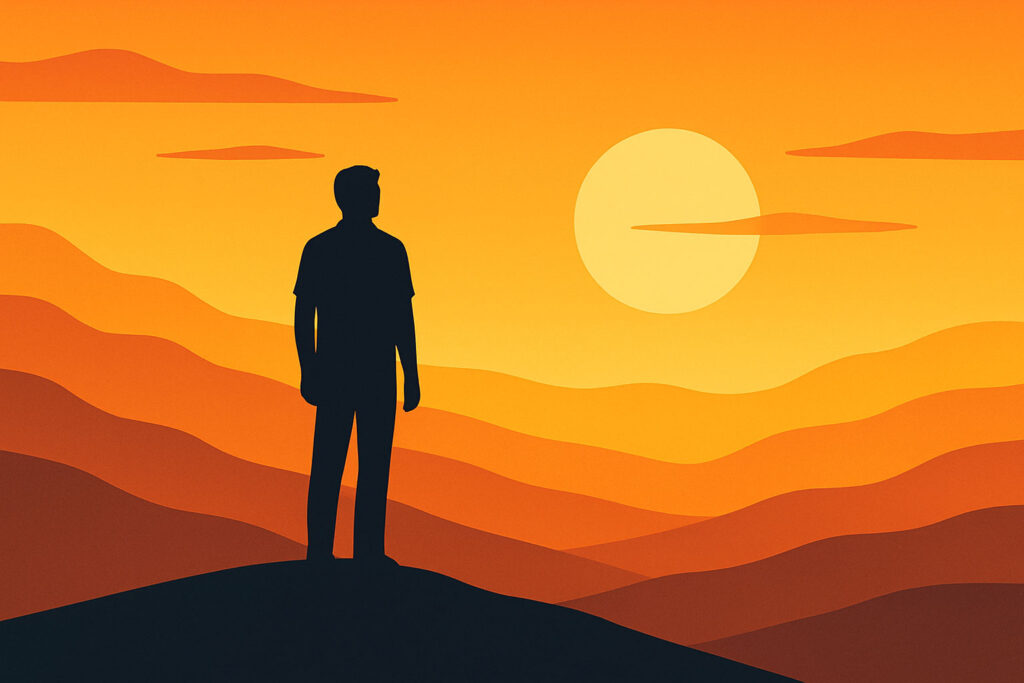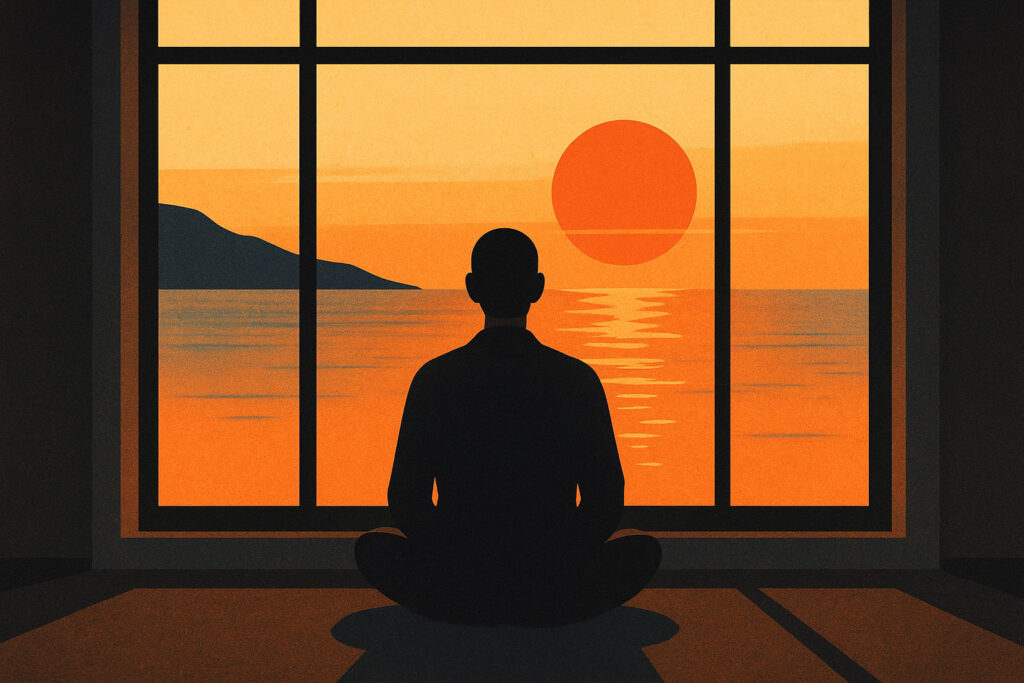
Breathing Your Way Back Home
A Buddhist parable of a blind turtle inspires reflection on life’s rarity, balancing samsara’s struggles with presence and spiritual homecoming.

“Thanks to impermanence, everything is possible.” —Thich Nhat Hanh
With the summer solstice now in our rearview mirror, it is hard to imagine how quickly this season of summer is going to come and go. It feels like a long slog through winter and spring to get to the gorgeous warm weather of summer and now we’re here. It is so magical to walk outside at twilight and it’s still warm and light out after 9pm! Love the summer vibes!
The summer solstice has been written about and marked as a significant event since the ancient cultures and early Roman civilizations wrote about it in the 1st century BC. When the earth’s axis is tilted so that the sun is at it’s highest position in the sky in the northern hemisphere on June 20th or 21st. This is the longest day and the shortest night of the year.
The summer solstice historically—and still to this day—is seen as a time of festival and celebration, marking a time of fertility. This is when all of the seasonal crops and farming traditionally would be in full swing with Mother Nature supporting the growing season with long days of maximum light and warmth.
But as this singular astrological moment occurs and the maximum daylight hours shine down, we immediately pass through that threshold and the days begin to shorten again. Even in a moment of extended daylight magic, the slow march to the winter solstice and the shortest, darkest day of the year suddenly begins. What can we takeaway from this changing of the light?
At the moment of our peak achievements in life—career, family, personal—we have moments when the sun of success shines so brightly. The moment of victory is a highlight. The term “highlight” was first used in the 17th century when describing the use of “light” in paintings. The highlight of the painting was the brightest portion of the work where the “light” shone down, typically on an angelic or ethereal scene.
When the light is shining on us and we feel the warm glow of success, it is precisely at that moment of peak light intensity when suddenly and inevitably the light begins to fade. In life, we simply can’t stay there. This is why so many athletes and artists have described the huge psychic let-down once the victory lap is over.
A moment like the summer solstice shows us so clearly that in an instant, the thing we have been chasing for so long, that thing that we have wanted, is now here and gone. It’s over in an instant. The days begin to shorten and the light begins to fade. So now what?
The lesson here is clear: summer solstice is a moment of rhythmic change; the beauty in life is never permanent. All of the growth of the summer season leads to harvest; harvest leads to an empty field; an empty field is plowed under to make way for new seeds and new cycles.
As humans, we chase things. It’s in our DNA. One of the things that we must confront and get really good at is cutting through what Chogyam Trungpa called “spiritual materialism.” This is an attachment to spiritual experiences that our ego can cling to as opposed to letting them go once the experience is done. The same goes for anything in life: The art of celebrating a peak moment, feeling the gratitude for that victory and then immediately moving on and getting back into rhythm. It’s like a drum solo. It can only last for a moment and then the drummer must lock back in to supporting the rhythm of the band.
How do we feel the joy and the excitement of a highlight while not becoming stuck in an endless loop of chasing highlights and then feeling disappointed and empty once the light begins to fade? This is the work. And it begins with a mindset that shifts from goal to process; from outcome to ritual and routine.
For many, the ritual of a weekly gathering at church, temple or mosque serves as a reminder to remain present and connected to a spiritual practice where the focus is looking within not at achievements or outer pursuit. Presence and being become the only focus.
A mindful approach to diet and exercise is another example of a system that we can implement that at its core doesn’t need to have a goal or an outcome. As I have landed in my mid-fifties, on-going pursuit of health and wellness without needing to hit PRs or weight targets has freed up the experience of food and training.
The focus is simply on ensuring that the ritual and routine is in place, that’s all. Goals are great. And achieving those goals is also positive. But if the pursuit of the goal hijacks the joy and the experience of the doing, then we lose the thread of what really matters.
Meditation: On a ten count, reflect on ways to evolve your awareness of the seasonal cycles in your life. It begins with awareness of the rhythmic patterns. If our default setting is not grounded in a profound trust of the process that we have created in the systems we have built in our lives, we are more likely to chase and cling to highlights. Instead, the art is in cultivating magic like a Tibetan sand mandala. They spend days creating the most intricate sand mandalas and then in an instant it is wiped away by the very hands that spent hours in its creation. Impermanence is the core of life. And the summer solstice is a reminder of the profound beauty and magic that life has to offer, but we must have the courage to embrace the warmth, and then let it go. A mind that can embrace life without clinging is a mind that is open and can shine with compassion and insight. This is the way.

A Buddhist parable of a blind turtle inspires reflection on life’s rarity, balancing samsara’s struggles with presence and spiritual homecoming.

Pablo Neruda’s “Keeping Quiet” teaches stillness amid chaos, reminding us that silence, breath, and presence restore peace and balance.

Inspired by Rory McIlroy’s Masters win and local golf struggles, this meditation explores resilience, nerves, and the courage to persevere.